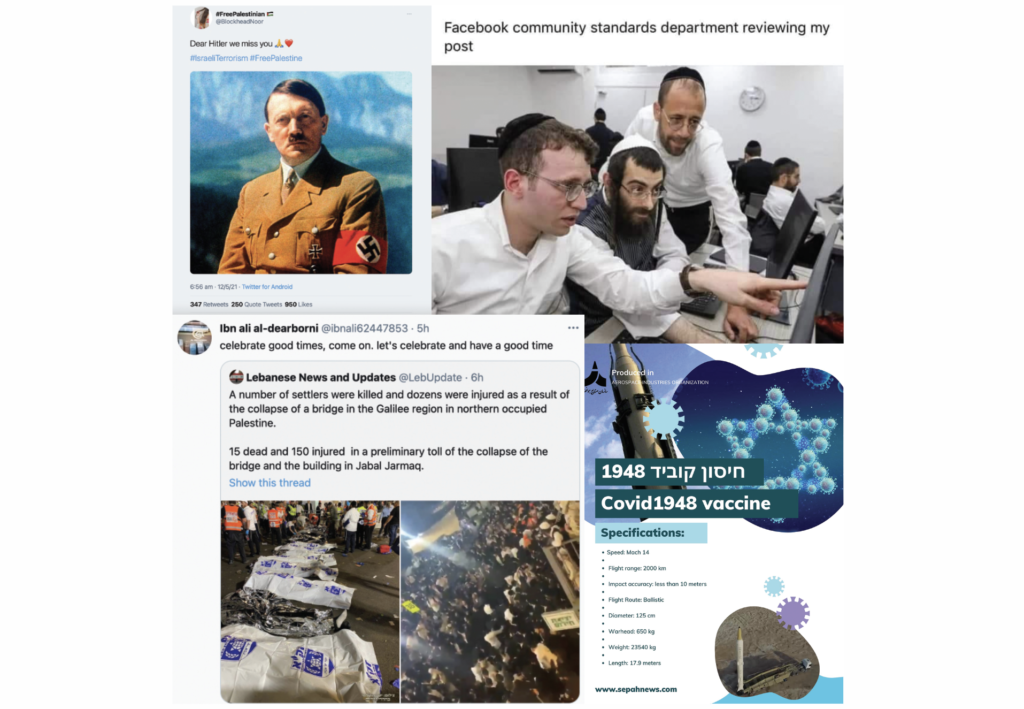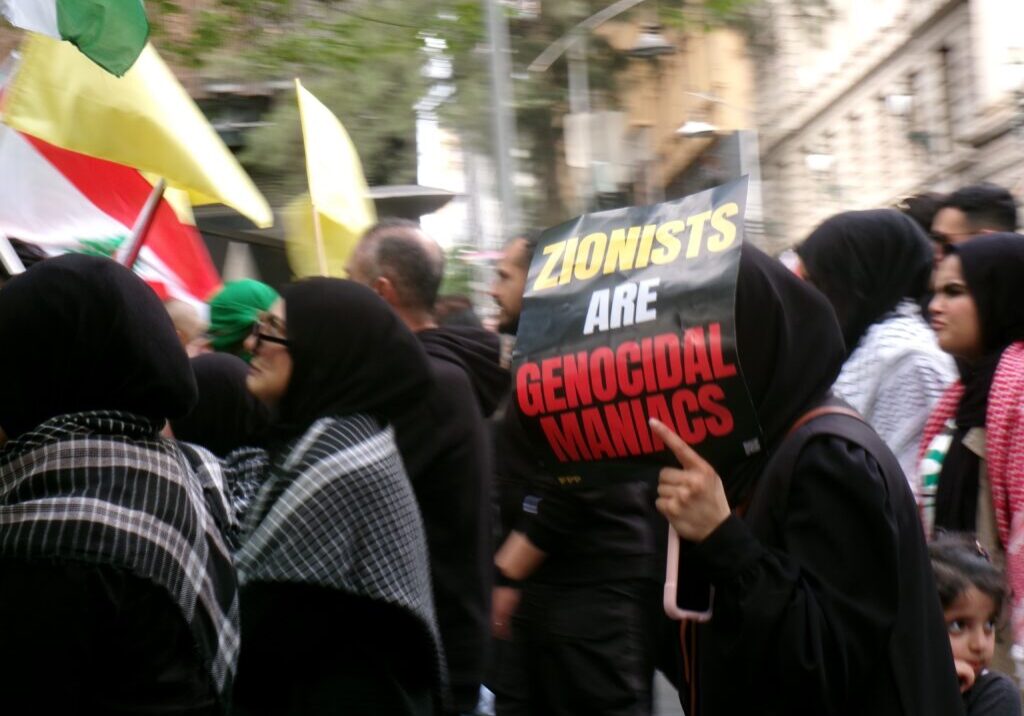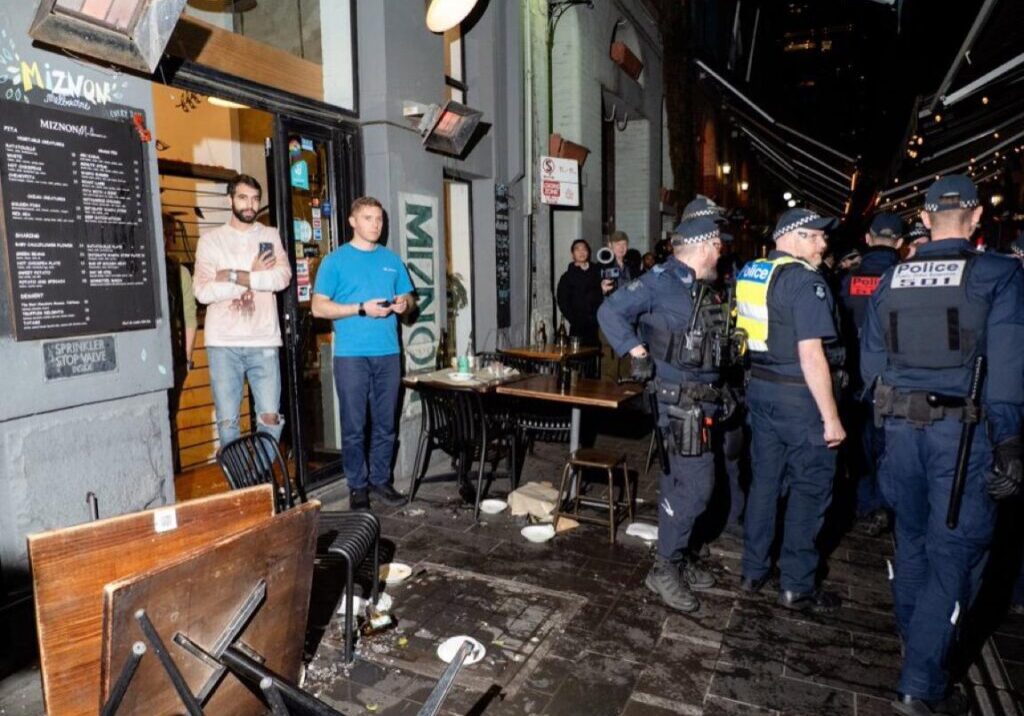Australia/Israel Review
Hate wave
Jul 26, 2021 | Naomi Levin

Confronting an explosion of online and offline antisemitism
For the world’s Jews, the past 18 months have served up a double-whammy of online antisemitism.
First, Jews were blamed for the coronavirus pandemic. Blood libel, Jewish global domination and vile anti-Israel tropes were reheated and served out across social media. Strange bedfellows, from Iranian internet trolls to white supremacists, took to a variety of digital platforms to blame COVID-19 on the Jews.
Then in May this year, social media users launched a new wave of antisemitism at the world’s Jewish people, as Israel defended itself against more than 4,000 Hamas rockets.
Action clearly needs to be taken, but what can be done in Australia to combat antisemitism online?
In March 2020, a few weeks into the global COVID-19 pandemic, the Australia/Israel Review published an article identifying how Jews were already being blamed for the spread of coronavirus.
By April 2020, the hashtag #covid1948 was born – a reference to the year of the founding of the modern state of Israel. The hashtag was used more than 85,000 times on Twitter over the next two months. A year later, it is still circulating, mostly in Arabic and Farsi-language tweets.
According to a study by Stanford University’s Freeman Spogli Institute for International Studies, the hashtag was started by Palestinian activists, who posted messages like “The virus of 15 May 1948. Israel is a much bigger threat to humanity than Corona #covid1948.”
The hashtag was then amplified by Iranian state media and Iranian government sources. Iranian Supreme Leader Ayatollah Ali Khamenei used the hashtag repeatedly on Instagram.
Similarly in mid-2020, at the height of pandemic panic, white supremacists and other racist extremists published thousands of posts, memes and diatribes positing that COVID-19 vaccinations were a “calculated, long-term Jewish plot to institute ‘Global Jew Government’, a new iteration of the age-old canard of international Jewish control,” according to the US-based non-government organisation the Anti-Defamation League (ADL).
The ADL went on to explain: “Some believe Jews will achieve this power by using the vaccine ingredients to sterilise the ‘white race’.”
The QAnon online conspiracy theory movement had already been focussing attention on antisemitic conspiracies prior to the pandemic. But QAnon, which peaked in popularity in 2020 as the Trump presidency ended, ramped up this rhetoric as the pandemic raged.
COVID-19-related antisemitism came to a head in mid-2020. But with 2021 came a new, and possibly even more noxious, wave of antisemitism during the May conflict between Israel and Hamas.
While credible analysts posit that Hamas had been planning for the conflict for months, there were online incidents that inflamed tensions even before full-scale conflict erupted.
One of them was a TikTok video showing an unprovoked assault by Israeli Arabs against an ultra-Orthodox Jewish man in Jerusalem. The short video was circulated widely and it is understood that the assault was carried out as part of a dare to Palestinian TikTok users to film themselves assaulting Orthodox Jews. Unsurprisingly, it inspired copycat video assaults and significantly inflamed societal tensions.
During the conflict itself, social media platforms were awash with highly emotive videos – the more shocking the content, the more views they attracted.
On the pro-Israel side, videos of the Iron Dome missile defence shield intercepting barrages of Hamas rockets, or Israelis cowering in shelters as sirens blared, got millions of views.
On the Hamas side, videos of young men in balaclavas firing rockets at Israel in quick succession while yelling “Allahu Akbar”, or of Palestinian children crying in front of destroyed buildings, garnered a similar number of views. Many of these videos were amplified by bots and fake accounts originating from places like Malaysia and Iran.
These videos were not moderated by broadcast journalists nor editors, they were dispatched raw to mobile phones around the world via social media platforms. The captions accompanying them were inevitably highly emotive and, in most cases, completely lacked essential context.
The disinformation and antisemitism that resulted was highly destructive and dangerous.
The hashtag #hitlerwasright regained popularity among anti-Israel posters. Facebook posts called for Jews to be massacred and their bodies ground up. Videos circulated accusing all Jews of having hatred and hostility in their hearts.
In social media posts, Israel was demonised at levels never before seen. Accusations that Israel was a colonial terrorist state engaged in ethnic cleansing and genocide became unremarkable due to their frequency. The hashtag #fromtherivertothesea, which denies the right of existence for a Jewish state, and often implies the desire for the ethnic cleansing of Israel’s Jews, trended unceasingly. These lies and expressions of hate leaked from social media onto posters at rallies around the world, which were then beamed out on the nightly TV news.
In fact, commentators increasingly agree that rising antisemitism online led to real-world incidents of antisemitism – from graffiti reading “free Palestine” sprayed outside Melbourne Jewish schools, to physical assaults on Jewish people in US and European cities.
Organisations that monitor antisemitic activities in Jewish communities around the world are tallying record numbers of assaults. In Britain, the Community Security Trust recorded more antisemitic incidents in May than in any month since 1984, when it began documenting incidents. Similarly, the ADL logged a more than 100% increase in antisemitic incidents in May 2021 in the US, compared with May 2020. This left May 2021 the worst month for acts of assault, vandalism, and harassment against US Jews since ADL’s tracking began in 1979.
Yiftah Curiel, director of digital diplomacy at Israel’s Ministry of Foreign Affairs, told Israeli media that incitement against Israel online during the conflict was “the engine behind at least part of the antisemitic incidents.”
Hollywood star Sacha Baron-Cohen was fed up, posting the message: “The surge in antisemitism on the streets is fuelled by antisemitism on social media. [Twitter founder] Jack [Dorsey], Twitter, why do you allow #hitlerwasright? Those who celebrate the Holocaust aim to perpetuate another.”
Platform Progress?
To their credit, in the second half of 2020, some of the biggest platforms, including Facebook and Instagram, acted to remove some conspiracy theory content, including QAnon related accounts and posts, as well as Holocaust denying material. However, as at mid-July 2021, Ayatollah Khamenei’s #covid1948 posts are still easily discoverable on Instagram.
TikTok too has banned many offensive hashtags, such as #hitlerwasright, that violate the platform’s community standards. Others though, including #covid1948, remain.
While Twitter has shown a willingness to remove or limit accounts that breach its guidelines – the most high-profile example being former US president Donald Trump – the social media giant has failed to remove antisemitic content from its platform. During 2020, it acted to remove QAnon content and accounts, but analysis by the ADL after the January riot at the US Capitol found many accounts still active and spreading dangerous QAnon conspiracies. And while Trump was kicked off Twitter, Ayatollah Khamenei, who has called for the destruction of Israel and spread Holocaust denial, is permitted to remain an active tweeter.
More clearly needs to be done. Jewish organisations around the world continue to advocate for social media companies to adopt the International Holocaust Remembrance Alliance (IHRA) definition of antisemitism in order to better identify antisemitism on their platforms – and ultimately to ensure all antisemitic material is removed.
In August 2020, 140 NGOs from around the world – including AIJAC – co-wrote a letter to Facebook calling on the social media giant to devise a plan to combat antisemitism and adopt the IHRA definition. To date, Facebook has not heeded this call.
In recent weeks, Facebook founder Mark Zuckerberg was on the receiving end of what so many Jewish people on social media have experienced regularly: personal antisemitic attacks. Zuckerberg posted a photo of his dog dressed in a Jewish skullcap (“kippa”) and prayer shawl and was bombarded with thousands of hateful messages in response.
Music journalist Eve Barlow spoke out for Israel on social media during the conflict. In response, she was subjected to what she termed a “social media pogrom”.
Barlow wrote: “The activity that Jews – Zionist Jews in particular – experienced all over the web [during the conflict] was bizarre at best and invalidating, abusive, and dehumanising at worst.”
Maybe after seeing the mob come after him for an innocent photo of his dog, Zuckerberg might again consider heeding the calls of leading global anti-racism campaigners and adopt the IHRA definition for his platform?
Among those calling for Facebook – and other social media giants – to do just that is the Inter-Parliamentary Taskforce to Combat Online Antisemitism, of which Australian MPs Dave Sharma (Liberal) and Josh Burns (ALP) are members. In July, the taskforce, made up of MPs from the US, UK, Canada, Israel and Australia, called for governments and social media platforms to adopt the IHRA definition because “without first defining a problem, we cannot combat it.”
Among its other recommendations, the taskforce has called on social media platforms to be more transparent about how their algorithms work and to publish regular reports on these issues.
This is particularly topical after the recent conflict, where pro-Israel content was censored and removed from social media platforms with no explanation. AIJAC experienced this first-hand.
Currently, each social media giant has its own algorithm that drives users to spend more time on the platform by showing them content the algorithm predicts will interest them. There is evidence that, in some instances, these algorithms drive users to view more extreme content than they would search out themselves.
The Inter-Parliamentary Taskforce and others have urged social media companies to be transparent about their algorithms and consider redesigning them so they do not promote content that can cause harm.
Fighting Back
Meanwhile, some Jewish social media users are taking a different approach altogether to rising antisemitism on Facebook, Instagram, Twitter and TikTok. It is a grassroots approach that has begun in the US, but is ripe for replication around the world.
This method sees young people openly and proudly flaunting their Jewish and Zionist credentials on social media. It is a brave approach, but one that empowers their hordes of followers to be proud of their traditions, their community and their spiritual homeland.
Music journalist Barlow regularly posts edgy calls to her 40,000 Instagram followers and 33,000 Twitter followers, such as the “Moshiach comes when every Jew stops hiding challenge” (referring to Jewish traditions about the coming of the Messiah after the Jewish people prove themselves ready). There are even younger voices like Blake Flayton, a Jewish university student who helped to start a group called the New Zionist Congress and did a high-profile CNN interview calling out antisemitism. Flayton was joined by Julia Jassey, a fellow American university student, CNN interviewee and founder of Jewish on Campus. Flayton and Jassey both have tens of thousands of social media followers to whom they spread messages of open Zionism and Jewish pride.
In a social media world of darkness, individuals like Barlow, Flayton and Jassey are pinpricks of light showing the world that Jewish people cannot and will not cower in the face of unprecedented online antisemitism.
Together with politicians and anti-racist NGOs, they will advocate, hit back and continue to proudly protect Jewish people from antisemitism on- and off-line in the face of an increasingly hostile global environment.
Tags: Antisemitism, Israel






